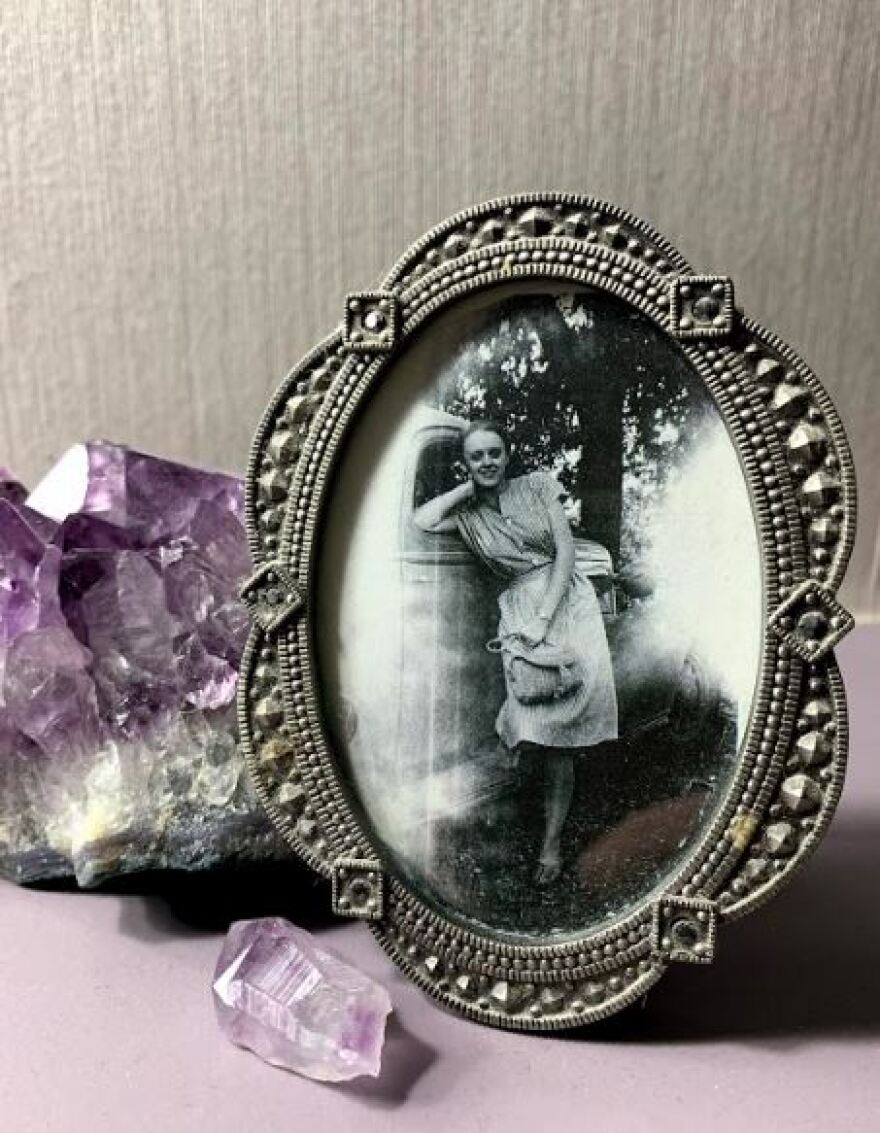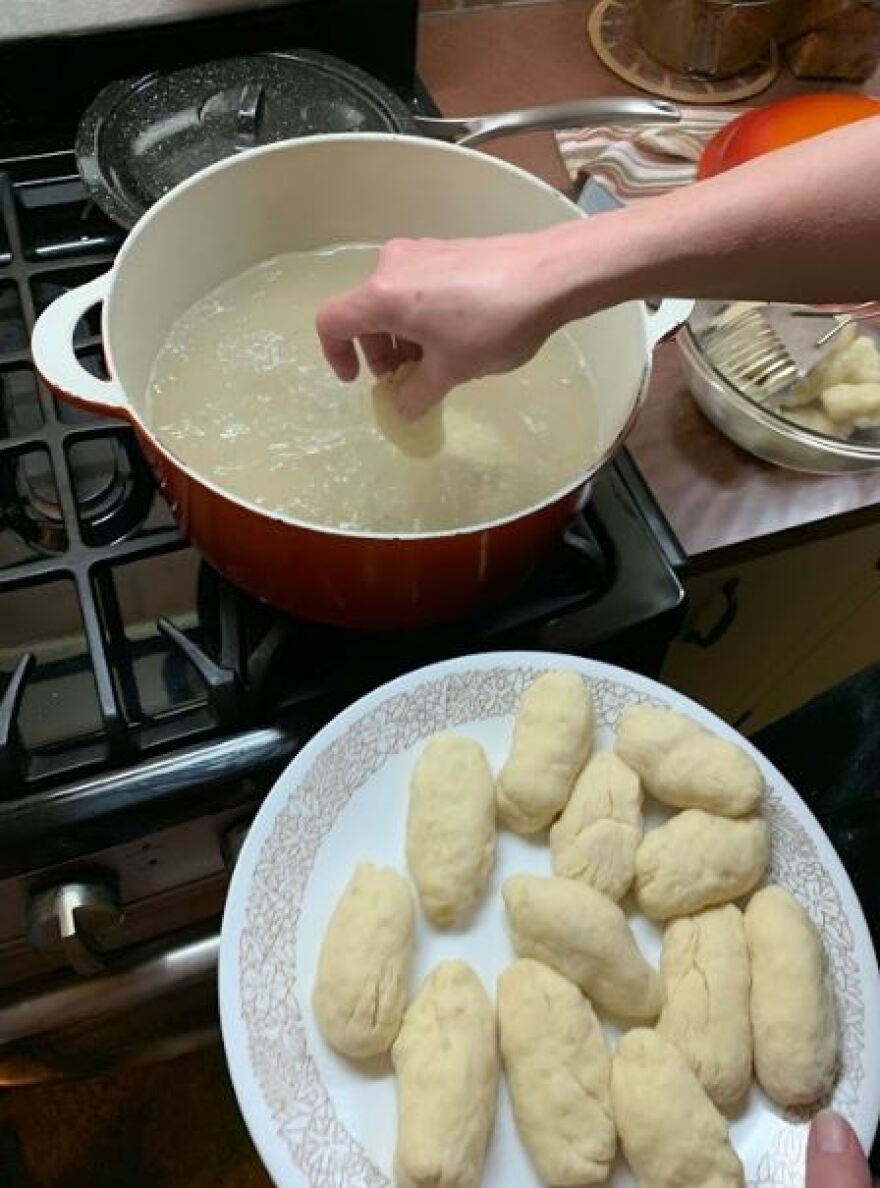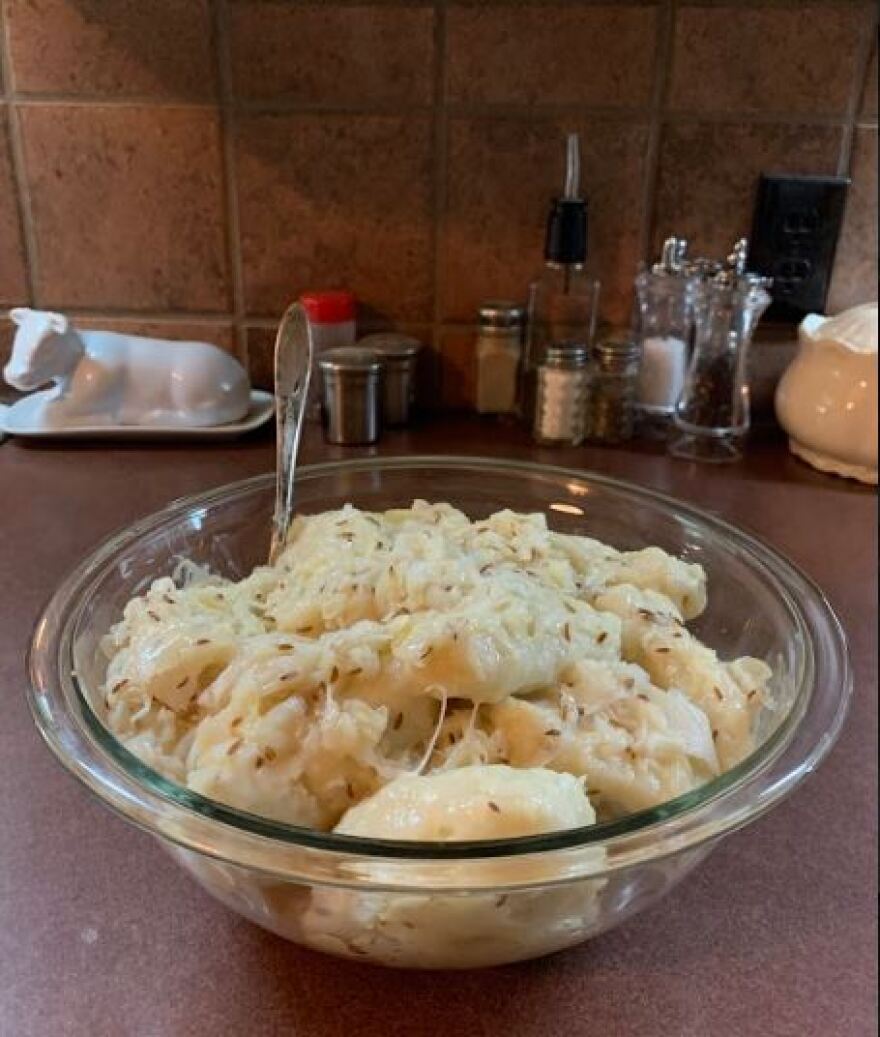KSMU’s Jessica Balisle brings us a special family recipe from her mother, Suzy Gray, with help from Jessica’s sister, Emily Gray. Knedlíky and zelí is a Bohemian dish of potato dumplings and sauerkraut. The recipe comes from Suzy’s parents, John and Mary Frances Ruzicka, and was passed on to them through many generations.
Bohemia is the westernmost region of the Czech Republic.
Suzy has done a little prep work before we begin – peeling and boiling potatoes until they’re soft.
“In Bohemian, it wouldn’t be potato knedlíky, it’d be bramborové knedlíky. So, bramborové is Bohemian for potato,” she said.
First, the potatoes are mashed with salt.
“I think we’re going to need a lot of salt because we’re going to need a lot of flour. And I think we’re going to have enough dumplings here to feed the world,” said Suzy.
In true Ruzicka fashion, Suzy has prepared twelve potatoes, instead of the eight to ten that recipe calls for. For this occasion, we are using a hand masher to mash the potatoes.

“I remember my mom was – you think about cooking about cooking and you really don’t think about exercising – but, many of the things that she did really required a lot of arm strength,” said Suzy.
“And think of all that bread she made, too,” I said.
“Oh, and she would knead that and knead that by hand. There were no bread machines. She was actually very strong. It was kind of funny – one of the things we used to do was arm wrestle. Mom could always beat all of us,” Suzy said.
Lots of flour (you can’t add too much)
The potatoes are now properly mashed and it’s time to begin adding flour. Mary Frances’ recipe simply says, “Lots of flour (you can’t add too much).”
“Mom always said, ‘If you think you have enough flour, double it.’ And I was talking to my sister, Mary Ann Dahlgren, today, and she said, ‘Yes, if you think you’ve added enough flour, double it,’” said Suzy.
“I think that’s the Ruzickas’ motto for everything in life,” said Emily.
After a couple cups of flour, two eggs are added to the dough. It gets very sticky. The amount of flour we add after the eggs feels ridiculous. Rotating between adding flour and mixing, our aprons begin to look like we’ve been in a snowball fight.
Boiling the knedlíky
After the dumplings are assembled, they will go in a pot of boiling water to cook. We have a large cast iron pot

going on the stove.
“Often this was made for family meals, too, that you would share. We would take this to family dinner parties. It was always one of the special things. Everybody always enjoyed it,” said Suzy.
The knedlíky should lose their stickiness before you put them in the water. After using up the canister of flour, Emily goes for a new bag. Suzy rolls out dumplings that are about 3-4 inches long and about an inch wide. They go in the pot of boiling water and cook for eight minutes.
Preparing the zelí
While the dumplings are cooking, we begin to prepare the sauerkraut, or the zelí.
“It’s not the canned sauerkraut that my parents made because we don’t have any of that, so we are using a commercial product. But, we’re going to spice it up a little bit,” said Suzy.
I ask my mom about making sauerkraut with her parents.
“There was a kraut cutter that they had, which was actually very large. There was a cutter in the middle of it. It had kind of a box to it, it was kind of a box cutter, and they would put the cabbage in there and it would slice the cabbage the perfect width for the kraut. This kraut cutter was used by a lot of the families and it was passed around as the cabbages were coming into season. It was kind of a hot item,” she said.

The zelí is seasoned with caraway seed.
“Everything had caraway seed in it. It was just an important spice for us. We’d put it on dumplings and we would put it on most everything we cooked as far as poultry,” said Suzy.
After adding the caraway, a little flour is added to the zelí to thicken the juice – about a tablespoon or two. The consistency should be creamy.
Once the knedlíky out of the boiling water, we combine the dumplings with the sauerkraut by gently tossing it in a big bowl. It’s white with flecks of brown from the caraway seed, just the way my grandmother’s always was.
“It looks like the real thing,” said Steve Gray.
“This is so good,” I said.
“I think it’s really good. Do they taste like Grandmas?” asked Suzy.
“They taste like Grandma’s.”
Knedlíky and Zelí recipe from Mary Frances Ruzicka
8-10 potatoes
Lots of flour (you can’t add too much)
2 eggs
Salt
Peel the potatoes and place in boiling water. Boil until soft. Mash and salt to taste. Completely cool. After the potatoes are cooled, combine with flour a little at a time to consistency of dough. Take about 1/3 cup of dog and roll in your hands with flour. You may need more flour. Drop a test dumpling into a pot of boiling water and boil for 8 minutes. If it comes out firm, continue boiling the rest of the dumplings. If it is too soft, add more flour. Serve hot.
Sauerkraut
Open a jar of sauerkraut and place in a pot on the stove. Add 2-3 tbsp’s of flour and caraway seed to taste. Heat till hot and serve.











